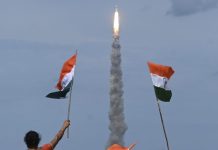The border dispute between India and China remains one of the most intense after the Doklam standoff. The latest news coming from the border is that the Indian Army will hold its ground firm remain in eastern Ladakh until a peaceful and diplomatic resolution is achieved.
TOI quoting government sources said that India will continue to protect its interests resolutely, deploy appropriate resources and work towards a peaceful resolution of the border dispute with China while opposing Chinese intrusions in the contentious region.
India will soon recommence border infrastructure development which was hindered by the Covid-19 pandemic, but will remain “open and flexible” in diplomatic talks with Beijing in a bid to resolve the India-China border, TOI quoted the source.
The source calls Chinese as intruders and claims that all activities and border patrols by the Indian Army were being done within its own side of the LAC. “But despite that, the Chinese restrained the Indian patrols. Delhi and Beijing are working out the matter diplomatically but there won’t be any compromise when it comes to the defence of our territory.”
Meanwhile, Indian Express reports that India and China have initiated the “working mechanism” at the diplomatic level. This has been initiated beside the army-to-army dialogue to “dis-engage” and “de-escalate” the border dispute.
The “Working Mechanism for Consultation & Coordination on India-China Border Affairs” was founded in January 2012 after border talks between then-National Security Adviser (NSA) Shivshankar Menon and his counterpart Dai Bingguo, and is headed by joint secretary-level officials from both sides.
While joint secretary (East Asia) in the Ministry of External Affairs (MEA), Naveen Srivastava, heads the Indian side, Beijing is represented by Hong Liang from the Ministry of Foreign Affairs, China.
Srivastava is believed to be heading the border dialogue as the mandate of the mechanism is clear: “aim for up-to-date communication of information on the border situation” and “for competently managing border conflicts”.
India’s evaluation is that the Chinese are involved in what is known in military parlance as “holding the line”. While there is no accepted Line of Actual Control (LAC), both Chinese and Indian army soldiers patrol up to their “assumed lines” and then return.
In the present border dispute, it looks like the Chinese have breached the perceived border and are now dwelling-in, in an attempt to “hold the line”.
Although the attempt is to fix the border dispute “locally”, where soldiers move back to their original positions in the next “7 to 10 days”, Indian position is that the “Chinese PLA soldiers who have trespassed into Indian terrority must pull back while emphasizing that Indian soldiers were on their side of the LAC.




